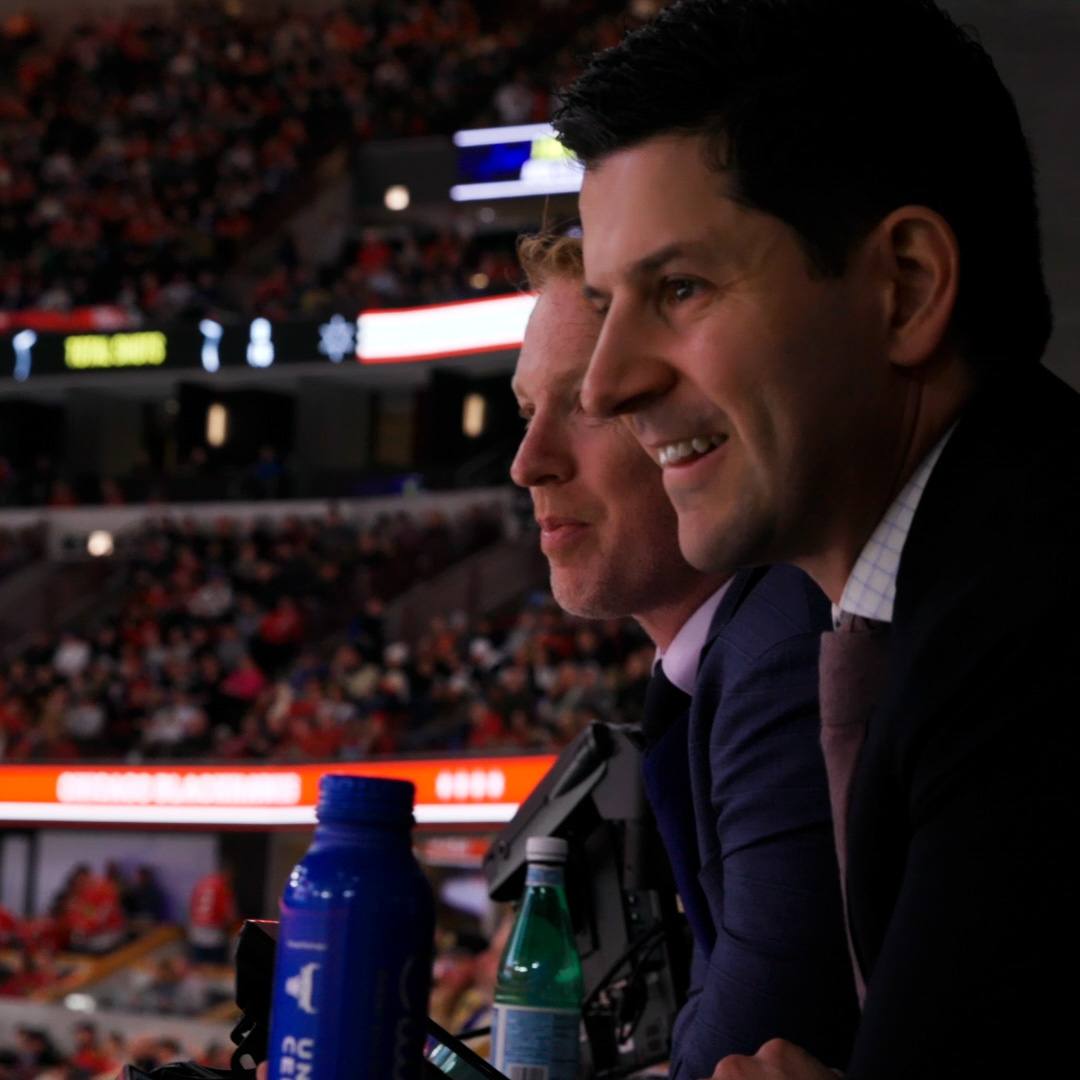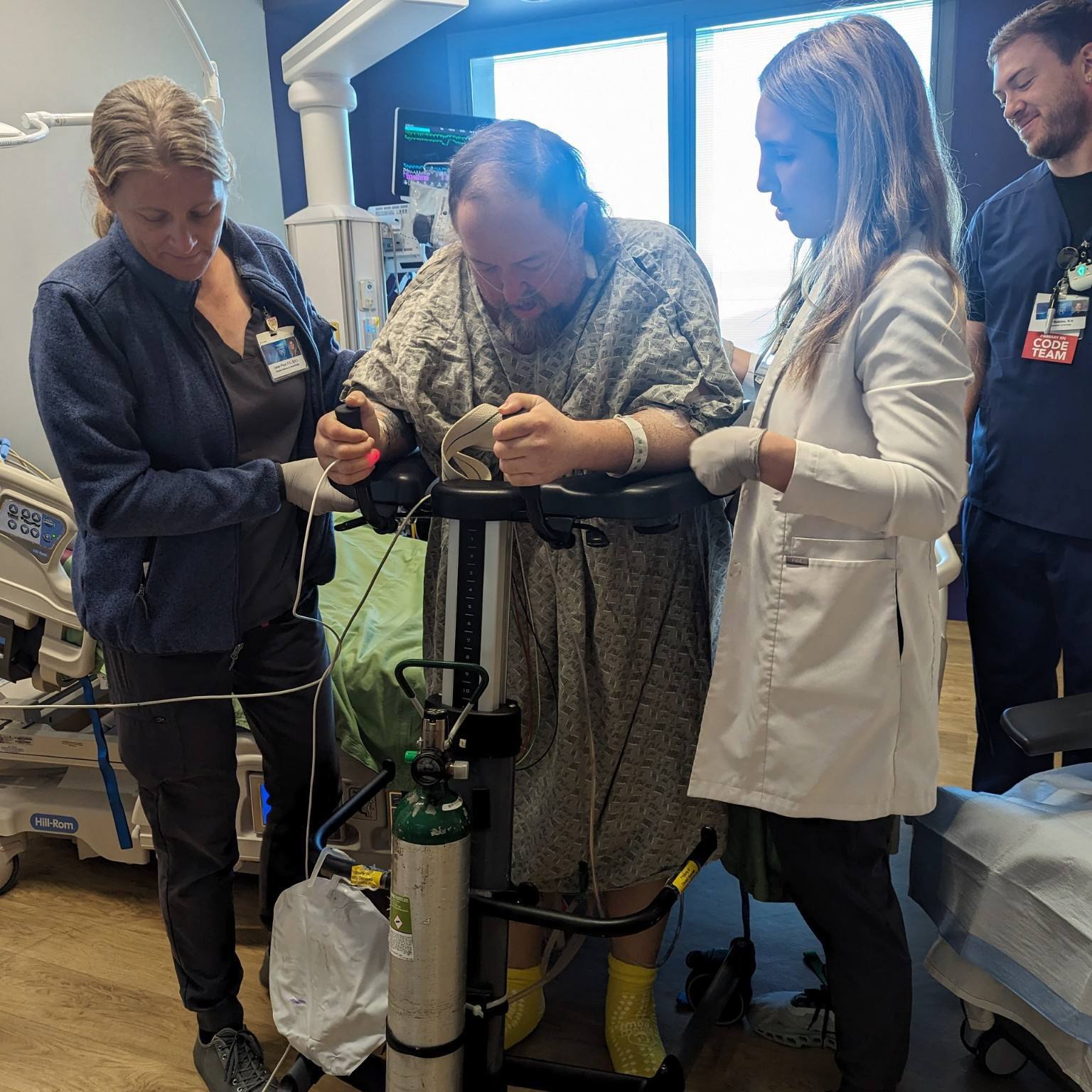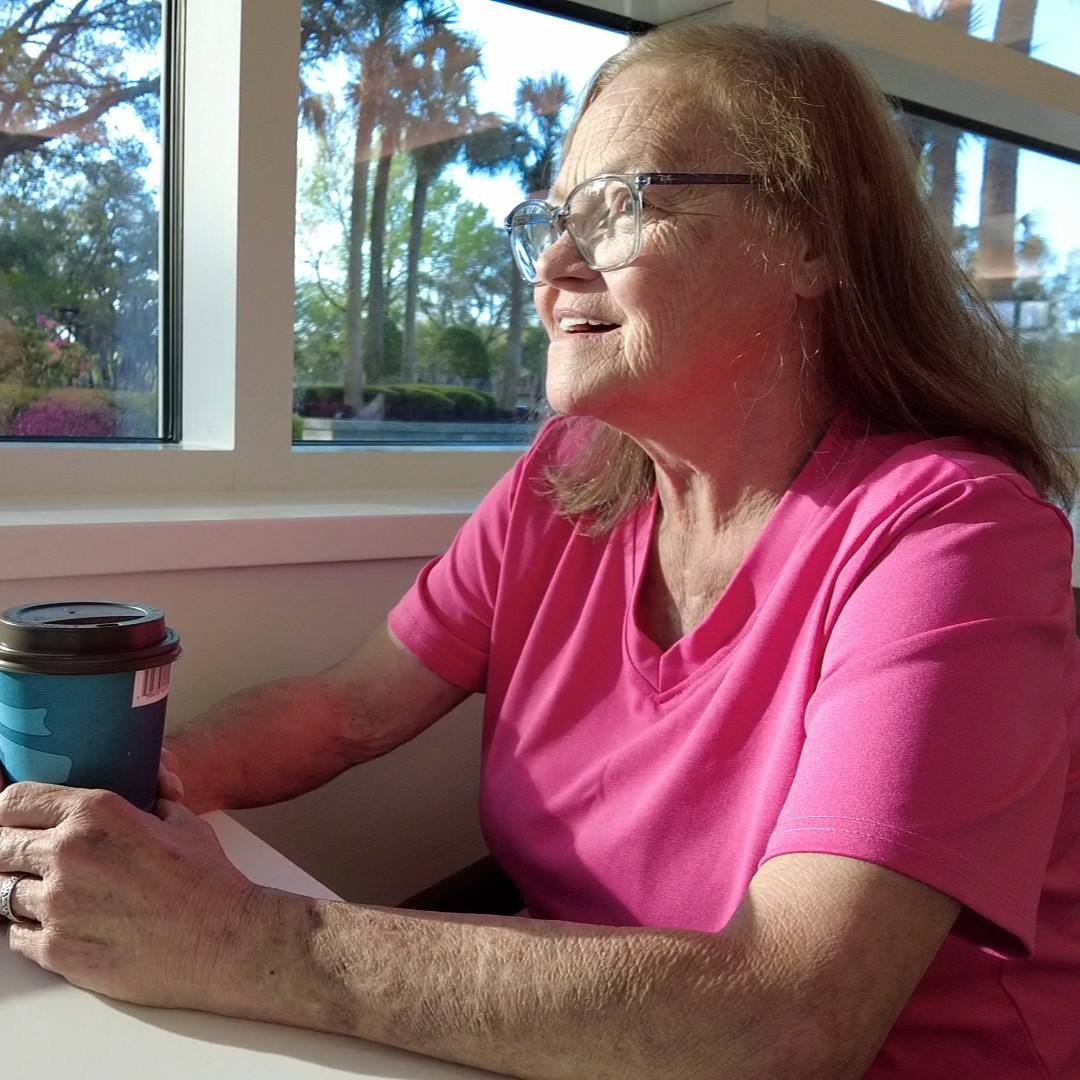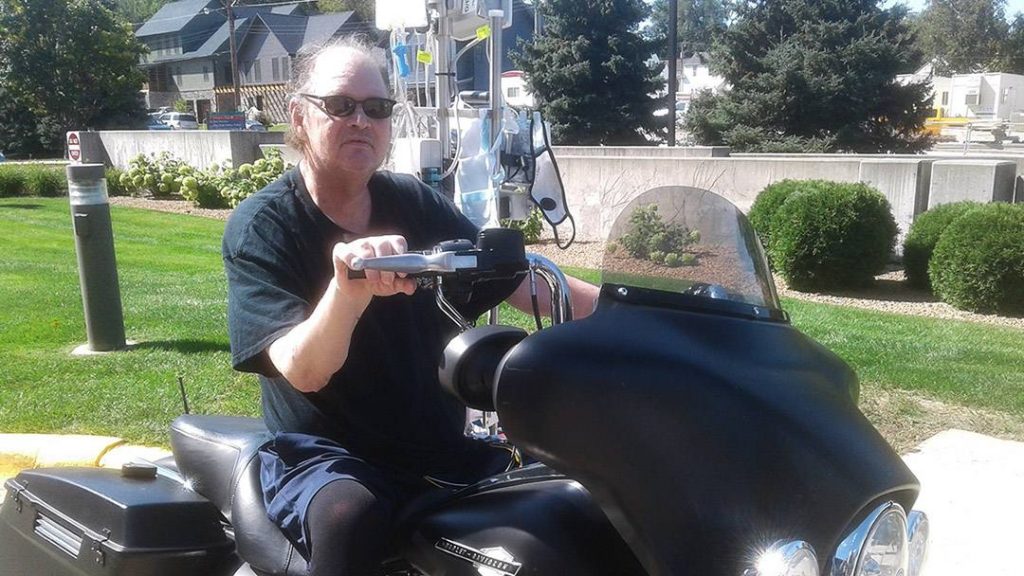
When Dale Leighton underwent a heart transplant at Mayo Clinic, the motorcycling enthusiast believed his days of poor health were behind him. But the new heart failed to work. For Dale, who's dealt with life-threatening heart disease for years, that meant a second heart transplant and a second journey through recovery.
Dale Leighton, of North Mankato, Minnesota, didn't let a massive heart attack 14 years ago stop him from riding his motorcycle. The 60-year-old didn't allow a device surgically implanted into his chest to keep his heart pumping stop him from riding. And he definitely hasn't let his first or his second heart transplant end his motorcycling career, either.
"That's my thing. I love it," says Dale, who underwent the second heart transplant at Mayo Clinic in Rochester in March when his first one failed less than a year after transplantation. "I've told my kids, they're going to have to peel that bike out of my cold, dead hands."
Thanks to the help of a committed team of Mayo Clinic cardiovascular specialists, surgeons and nurses, that day is no longer bearing down on Dale. Since his second transplant, Dale's life has taken on a new hue — one that's not tainted by heart failure. "I keep telling (my doctors) that I think I got a young heart because I feel so good," Dale says.
This past summer, Dale, with the support of his younger brother, traveled to Sturgis, South Dakota, in the Black Hills, to take part in the popular Sturgis Motorcycle Rally. Although Dale didn't ride his bike to South Dakota, once at his destination, he saddled up and took to the open roads. On his motorcycle, with the beauty of creation around him, Dale's thoughts often veered toward the divine. "When I'm behind the handlebars, that's when I feel closest to God," Dale says. "It's just me and Him and the road."
The long road to transplant
Dale's journey to his heart transplants began in 2016 in the office of a local cardiologist. Dale was seeking help with issues related to his left ventricular assist device, or LVAD, which he'd had implanted eight years earlier. The device helped his weakened heart pump blood to the rest of his body. The physician believed Dale's concerns would be better addressed elsewhere and sent him to Mayo Clinic.
At Mayo Clinic’s Department of Cardiovascular Medicine, Dale's care team discovered that a persistent infection had developed around the LVAD. It was during that visit that Dale met the first of many Mayo Clinic physicians who have been involved in his care since then. "You don't just see one of them. There's a whole group of them," he says. "I've liked every one of them. I told them I consider them family."
"You look like a normal human being, but you're sick. That gets frustrating. At least, it did for me. It still does."
Dale Leighton
Despite his poor health when he arrived at Mayo Clinic, Dale's heart disease wasn't severe enough to qualify him for a heart transplant. By April 2017, however, Dale's condition had deteriorated to the point where the only thing he could ride was a motorized scooter. He was placed on the transplant waiting list.
"I couldn't even do my grocery shopping anymore. I was so weak," Dale says. "You tell people, and they're like, 'Yeah, I get it.' But they don't know. They don't have a clue how sick you get. You look like a normal human being, but you're sick. That gets frustrating. At least, it did for me. It still does."
Although placement on the transplant list gave Dale hope, it was tempered by the knowledge that the wait for a heart can take months or years. "A lot of people die waiting," Dale says, adding that he thought he wouldn't make it to transplant.
But in early October 2017, a heart became available for Dale. He had the surgery under the direction of Richard Daly, M.D., a Mayo Clinic cardiovascular surgeon and director of the Heart Transplant Program. During the surgery, Dr. Daly detached the LVAD, removed Dale's diseased heart and replaced it with a new one. After the surgery, Dale spent several weeks in the hospital before moving to transitional housing at the Gift of Life Transplant House in Rochester, Minnesota. Dale remained at Gift of Life until just before Christmas.
An unexpected detour
From the get-go, the new heart didn't seem to work properly, Dale says. "I felt like crap after the first one. I think I actually went backward." By spring 2018, it was clear that there was a serious problem.
"It was a puzzling process," Dr. Daly says. "Once he recovered from the transplant, he was doing pretty well. But then he started having heart failure. The cause of the heart failure was hard to diagnose. We thought it was probably an injury in the small blood vessels of the heart, which could have been a type of rejection. Or it could have been a type of arterial blockage that can occur in the very small blood vessels of the heart after transplant."
Dale's worsening condition required him to be hospitalized in Mayo's Cardiac Intensive Care Unit to receive IV medication to fight against rejection. He also required placement of an intra-aortic balloon pump to assist with the flow of blood through his aorta and to the rest of his body. By October 2018, just one year after his first transplant, Dale was back on the transplant list.
"It was a very rapid decline in the function of the heart," Dr. Daly says. "We sometimes see changes in hearts similar to this problem after transplant many, many years later. But to have it happen around a year after the first transplant is very unusual."
Buoyed by cycling aspirations
During the long months that Dale remained hospitalized waiting for another heart, his life became very small, he says. "There was no quality to it. I spent most of the time in the hospital bed. You don't have a lot of energy."
The care and support Dale received from his nurses was tremendously helpful in keeping his spirits up. "Heather Fox, she was the nurse in the ICU and one of the main reasons I kept going. She would take the time to wash my hair. She really touched my heart," Dale says. "The nurse coordinator on the floor would make home-cooked meals for me and brought me Christmas gifts. There is some really heart-touching stuff in there."
When Dale returned to the hospital, weak and deconditioned after his first transplant, Fox helped him focus on having good days. "Our friendship grew because I never treated him as if he was sick or dying, but instead a person who had a purpose and hope," she says. "Even though he experienced a long hospitalization with unexpected setbacks, he kept a positive and optimistic attitude about his situation."
"During the months I spent with Dale, he taught me the power of positivity, determination and appreciation for the little things in life. He left an indelible impression on me and many others who crossed his path."
Heather Fox
Another driver for Dale to stay positive was his desire to return to motorcycling. In his room near his bed, he kept a small replica of his Harley, which he looked at often. An added incentive to stay upbeat and strong was the trip to Sturgis that his brother had booked for 2019. "It was definitely a big push for me — that and my kids and my family."
The importance of motorcycling in Dale's life served a useful purpose as he marked the time until transplant, Dr. Daly says. "When patients are in the hospital like this waiting for a heart for a long time — never knowing when they're going to get the transplant and be able to move on — anything that can help keep one's spirit up can be pretty helpful in terms of motivation."
In early March, Dale's wait ended when a second heart was offered to him. Once again, Dr. Daly removed the failed heart and transplanted another. When Dale awoke from his surgery, he could feel the difference immediately. "I woke up feeling better, more alert. The second heart is a completely different feeling from the first one," Dale says.
As with his first transplant, Dale remained hospitalized for several weeks and then transitioned to the Gift of Life House. During the time Dale spent recovering from the second transplant, his impact on those around him was palpable, Fox says. "I watched as he got stronger, and soon we could barely leave the unit without countless patients, families and staff stopping him to say hi," she says. "During the months I spent with Dale, he taught me the power of positivity, determination and appreciation for the little things in life. He left an indelible impression on me and many others who crossed his path."
After Dale was able to leave the Gift of Life House, he returned home to continue rehabilitation and strengthening his weakened muscles with the goal of attending Sturgis in August.
"Having a heart transplant is a lot to go through. The recovery and rehab are long, and he had to start all over again and go through it all over again," Dr. Daly says. "It takes the right kind of stuff to face up to the difficulties, to go through it again and hang in there."
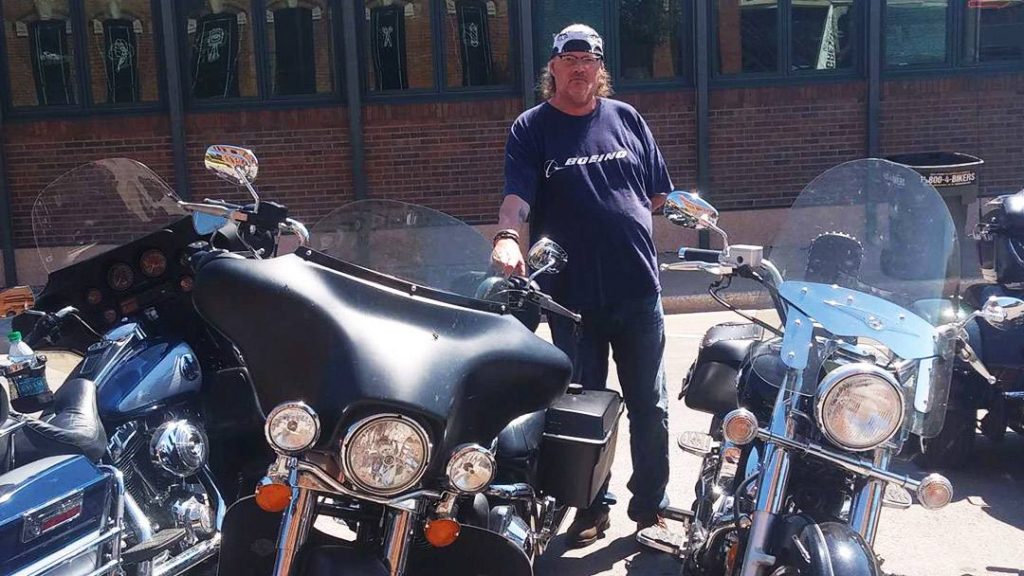
Dale worked on building strength throughout the spring and summer, and although he didn't actually ride to the rally, the biking Dale did when he arrived in Sturgis felt good and familiar. Unfortunately, a fall while at home near the end of the summer resulted in a broken shoulder and ankle injury that sidelined him from further cycling for the year.
Suffering the setback, which has affected his ability to exercise and build strength, has been frustrating, Dale says, but his heart continues to beat strongly and his dreams of biking again are as close as ever.
"I'm pretty weak now. It's no good to be iffy on a bike," Dale says. "But next year is my big comeback."
HELPFUL LINKS
- Learn more about heart transplants.
- Visit the Department of Cardiovascular Medicine.
- Check out the Mayo Clinic Transplant Center.
- Explore Mayo Clinic.
- Request an appointment.
Related Articles
